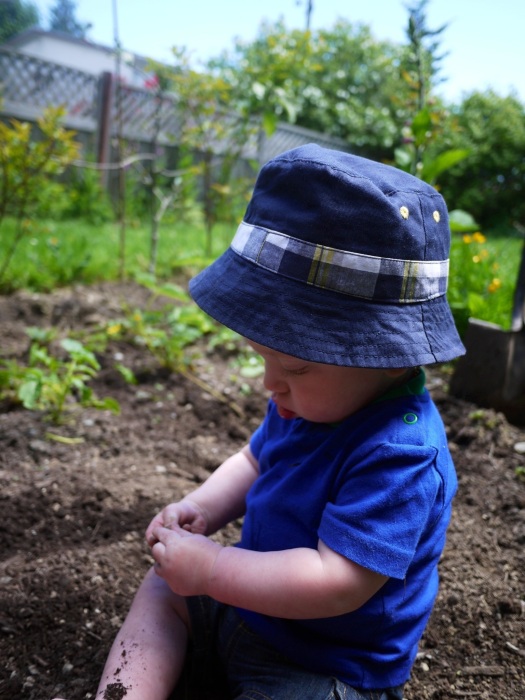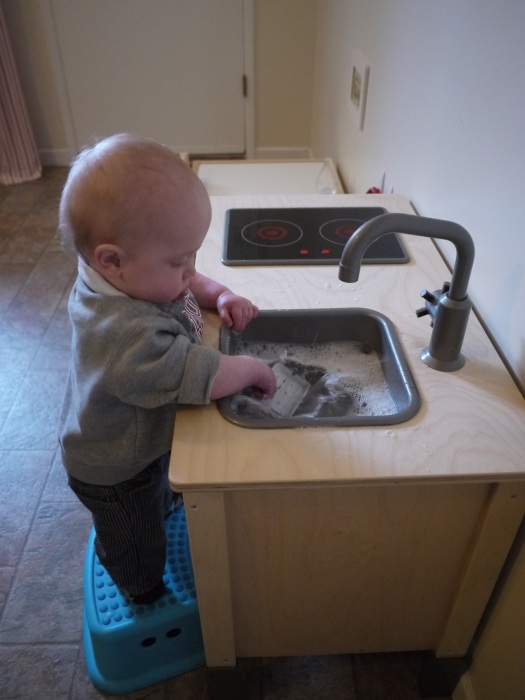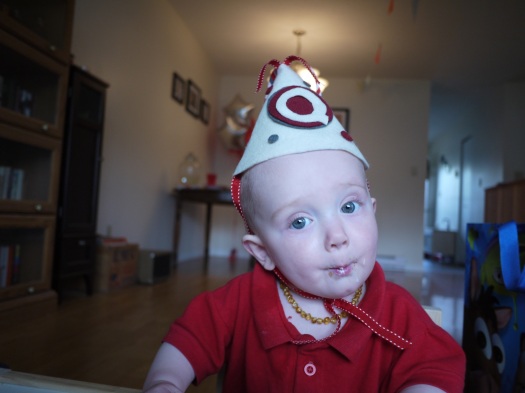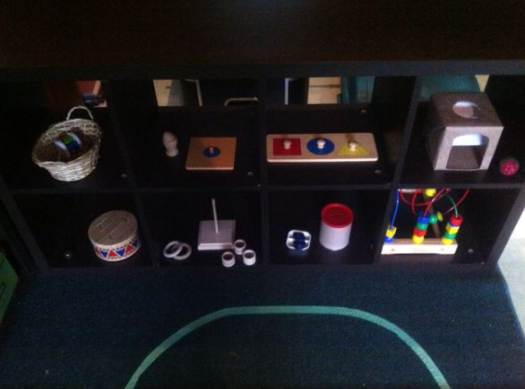
Of all the questions I recieve about Montessori, our little kitchen gets more questions than anything else. So, I decided I’d better put all the details in one place.
We bought this IKEA kitchen for Quentin for his first Christmas. An odd gift to give a premature 8 month old yes, but he had just started to wean, and we knew it would be perfect in the upcoming years.
There is nothing more important in Montessori than respect for the child, and with that, there is no greater respect than the Prepared Environment.
Somewhere that is their own. Somewhere they can keep their things independently, neatly and in a reachable space.

This picture was first featured here. It is our first set up of the kitchen. It houses Quentin’s tiny porcelain weaning glasses, first dishes and some fun yet practical kitchen tools that waited for the day he could use them.
Just like when we set up his Care of Self area in the bathroom featured here, we set up the kitchen far earlier than he could use it. The Absorbent Mind of a child is always watching. A parent or teacher needs only to model the behaviour consistently for the child to start mimicking it on their own. He watched us remove his dishes, return them, clear his dirty ones to the tiny sink. And so it wasn’t long before he was doing it independently.

Here he is just after turning one. At this point it was mostly exploration. But it quickly became more.

I wrote a post here about our essential kitchen tools. Although we have added many more now, these 6 are still our important ones. These are the ones that get used everyday. Providing your child with real working tools is critical in Montessori. This has never been a play kitchen. He slices, chops, pours, strains and peels real food. Some may become alarmed at the thought of small children using sharp knives and tools. However, it is extremely important children be given the trust from an early age. There must be many lessons on safety, concentration, and use. These don’t simply come because you tell your child to be careful and then hand over a knife. Modelling, many experiences and dialogue with a parent are needed.

Here he is just before two years old washing his dishes. A small liquid soap dispenser and dish to hold a sponge (half the size) allowed him complete independence at an early age. We installed hooks beside the kitchen to keep his aprons within easy reach. Many of our kitchen accessories came from Montessori Services.
We don’t have plumbing on this wall. The cost of installing plumbing was completely unreasonable when he will only use the kitchen for less than 7 or 8 years. We drilled a hole in the bottom of the plastic sink and he uses a flat plug. He fills the sink with warm water from a pitcher and when done, pulls the plug and it emptied into a bowl inside on the shelf at that time. It now drains out a little hose and into a bucket that he empties.
These were all the first skills he required. His kitchen has evolved over time so that now, at four it includes cooking with heat.

A small electric skillet allows him to cook a variety of things. Above a veggie burger for his lunch. Below he’s making scrambled eggs for our dinner.

I’ll get the disclaimer out of the way now: He is capable, but he is still young. Whenever Quentin is using heat or a sharp blade, I always have both eyes and my full attention on him. His independence and his safety are my responsibility.
So, how does one replicate this? It’s like anything else you would put on your child’s Montessori shelves. This is a process of many steps. Start small, with one task at at time. If they don’t put away their own dishes now, they are not ready to cook independently.
Modelling is key. Show them how to wash dishes, cut fruit, peel vegetables. This is joyful work to children. Not chores.
Keep the environment based in reality. If you truly want them to do Practical Life kitchen work, the kitchen must be real. There must be a useable surface space. There must be a useable sink.
There are so many play kitchens on the market. Brightly coloured ones with flashing lights or sounds, and media characters. These along with play food, toy utensils and the lack of water and heat will confuse the child ultimately setting them up for failure.
If you truly want them to succeed, look for a kitchen that you would love to use.
Please feel free to leave questions or comments and I will do my best to answer them.





























